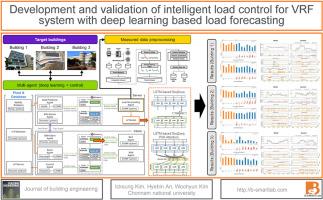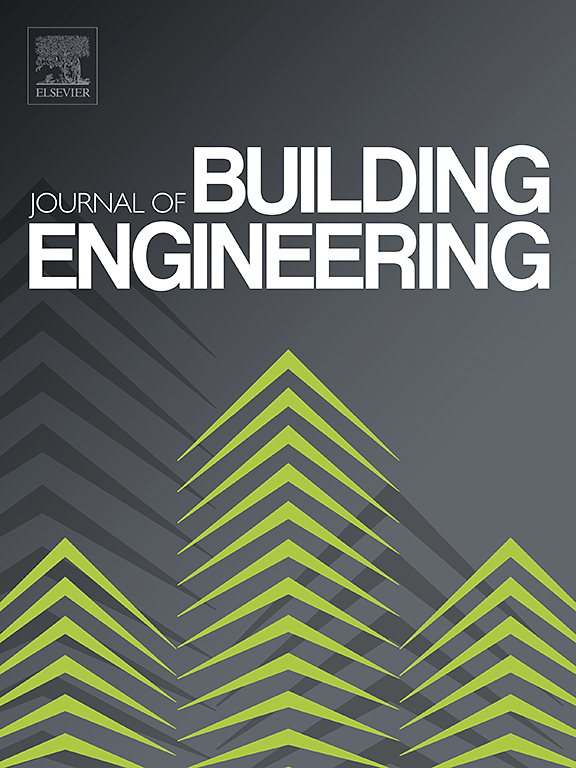Development and validation of intelligent load control for VRF air-conditioning system with deep learning based load forecasting
IF 6.7
2区 工程技术
Q1 CONSTRUCTION & BUILDING TECHNOLOGY
引用次数: 0
Abstract
Variable refrigerant flow (VRF) air-conditioning systems have seen significant growth in Asia and its application is expanding globally. Despite the expanded application, most previous studies have focused on developing fault detection and diagnostics to achieve energy-efficient operations than on predicting power consumption. It's very difficult to predict the electrical consumption owing to its complex system configuration and various control strategies. A new control strategy is described for optimal adjustment of the desired target level based on time series forecasting using the optimized sequence to sequence model for VRF systems. Sequence to sequence (seq2seq) model with attention mechanism and Bayesian optimization is developed to predict accurate hourly and daily forecasts and rapid feedback control for fluctuating power consumption for VRF systems. The optimized seq2seq model is integrated into the intelligent load control (ILC). ILC can be used to manage VRF systems by dynamically prioritizing indoor units for curtailment using both quantitative inputs and qualitative rules. Overall, the results demonstrate that the deep learning based control allows coordination of the controllable loads of VRF systems in three commercial buildings. ILC with deep learning manages the power consumption within a desired target level, as well as indoor temperature reflecting the status of controlled indoor units, as objective functions of the control algorithm.

基于深度学习负荷预测的 VRF 空调系统智能负荷控制的开发与验证
变制冷剂流量(VRF)空调系统在亚洲有显著增长,其应用正在全球范围内扩大。尽管应用范围不断扩大,但以往的研究大多侧重于开发故障检测和诊断技术,以实现高能效运行,而不是预测耗电量。由于其复杂的系统配置和各种控制策略,预测耗电量非常困难。本文介绍了一种新的控制策略,利用 VRF 系统的优化序列到序列模型,在时间序列预测的基础上对所需目标水平进行优化调整。开发了具有关注机制和贝叶斯优化的序列到序列(seq2seq)模型,以预测每小时和每天的精确预测,并对 VRF 系统的波动功耗进行快速反馈控制。优化后的 seq2seq 模型被集成到智能负载控制(ILC)中。ILC 可用于管理 VRF 系统,利用定量输入和定性规则对室内机组进行动态优先缩减。总之,研究结果表明,基于深度学习的控制可以协调三栋商业建筑中 VRF 系统的可控负载。作为控制算法的目标函数,具有深度学习功能的 ILC 可将耗电量控制在所需的目标水平内,还可将反映受控室内设备状态的室内温度控制在所需的目标水平内。
本文章由计算机程序翻译,如有差异,请以英文原文为准。
求助全文
约1分钟内获得全文
求助全文
来源期刊

Journal of building engineering
Engineering-Civil and Structural Engineering
CiteScore
10.00
自引率
12.50%
发文量
1901
审稿时长
35 days
期刊介绍:
The Journal of Building Engineering is an interdisciplinary journal that covers all aspects of science and technology concerned with the whole life cycle of the built environment; from the design phase through to construction, operation, performance, maintenance and its deterioration.
 求助内容:
求助内容: 应助结果提醒方式:
应助结果提醒方式:


